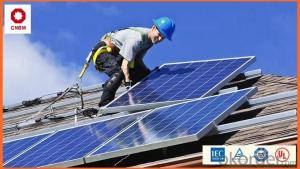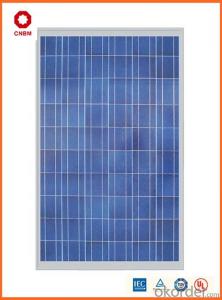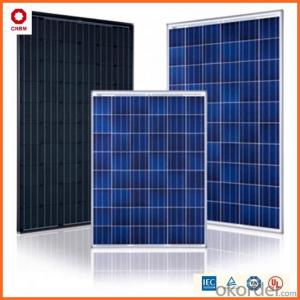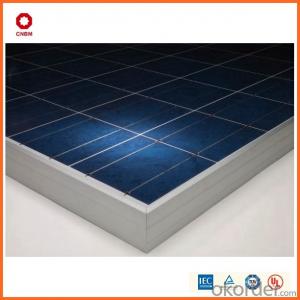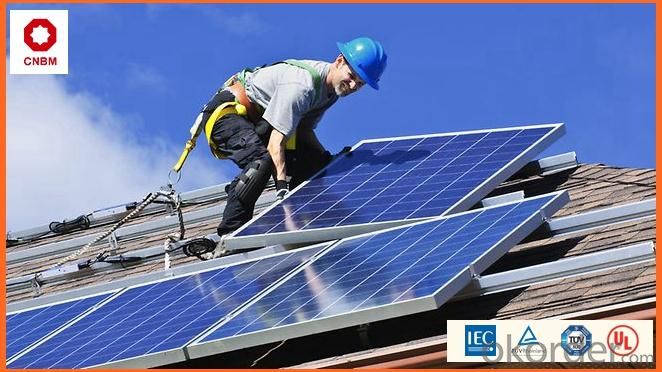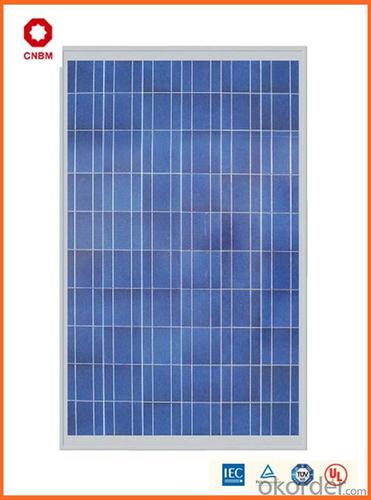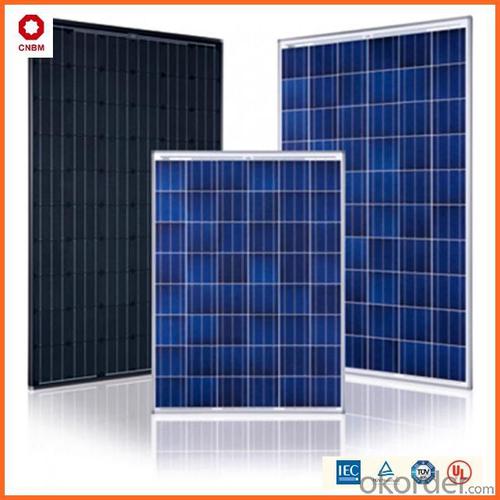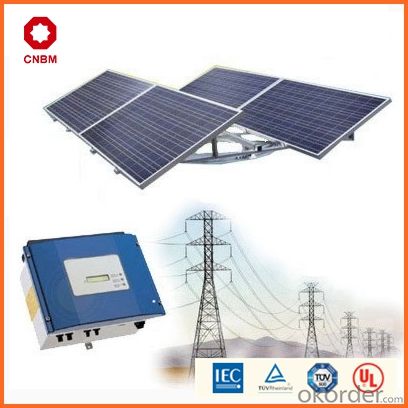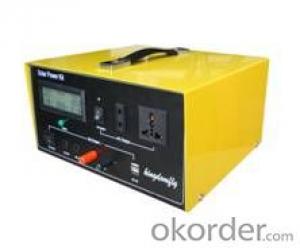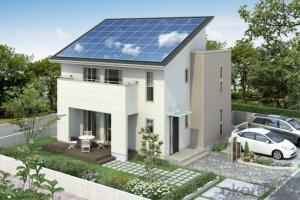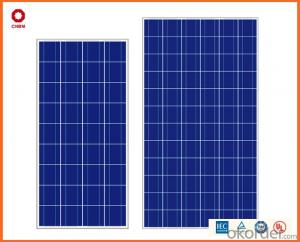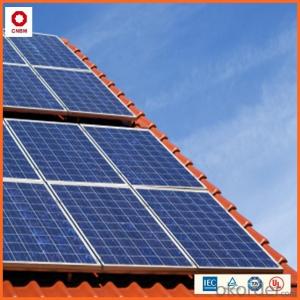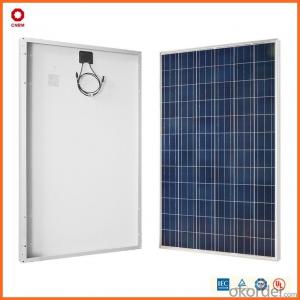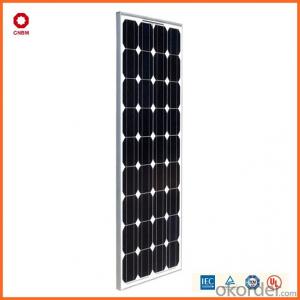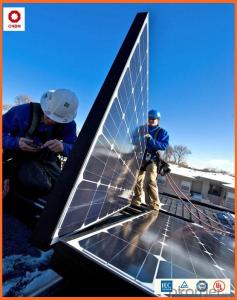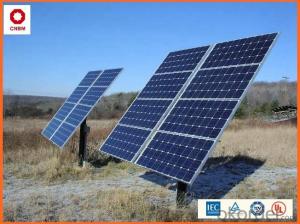40w Small Solar Panels in Stock - Solar Energy Systems New Jersey - China Manufacturer
- Loading Port:
- China main port
- Payment Terms:
- TT OR LC
- Min Order Qty:
- 1 watt
- Supply Capability:
- 10000000 watt/month
OKorder Service Pledge
OKorder Financial Service
You Might Also Like
Specification
Product Description:
Hot Sale !!! Quality and Safety of Small Poly Solar Panel 5w~150w
1. Rigorous quality control meets the highest international standards.
2. High-transmissivity low-iron tempered glass, strong aluminium frame.
3. Using UV-resistant silicon.
4. IS09001/14001/CE/TUV/UL
Warranties of Small Poly Solar Panel 35~85w
1. 10 years limited product warranty
2. 15 years at 90% of the minimal rated power output
3. 25 years at 80% of the minimal rated power output
Specification
Characteristics of Poly solar panels CNBM (245-320W) | |||||
Max Power Voltage Vmp(V) | 30.3 | 30.8 | 31.1 | 31.4 | 31.85 |
Max Power Current Imp(A) | 7.60 | 7.64 | 7.73 | 7.81 | 7.85 |
Open Circuit Voltage Voc(V) | 36.1 | 36.6 | 37 | 37.3 | 37.68 |
Short Circuit Current Isc(A) | 8.50 | 8.55 | 8.65 | 8.75 | 8.85 |
Max Power Pm(W) | 230W | 235W | 240W | 245W | 250W |
Temperature Coefficient of Cells Poly solar panels CNBM (245-320W) | |
NOCT | 45± 2 |
Temperature Coeffucients of Isc | 0.0492 |
Temperature Coeffucients of Voc | -0.3374 |
Temperature Coeffucients of Voc | -0.4677 |
Mechanical Data of Poly solar panels CNBM (245-320W) | |
Dimension | 1638 × 982 × 40 mm |
Weight | 19.5 kg |
No. of Cells and Connections | 60 (6 ×10) |
Tolerance | 0 ~ + 5 W |
Cell | Monocrystalline Cell 156 × 156 mm |
Packing | 624 Pcs/40ft(H) Container |
Limits of Poly solar panels CNBM (245-320W) | |
Operating Temperature | -40 to +85 |
Storage Temperature | -40 to +85 |
Max System Voltage | 1000VDC(IEC) / 600VDC(UL) |
Features of our products:
• High conversion efficiency mono/poly-crystalline amorphous silicon solar cells
• Modules incorporate high performance bypass diodes to minimize the power drop caused by shading
• High transmittance, low-iron tempered glass
• High performance EVA encapsulant to prevent destroying and water.
• AI frame: without screw, corner connection. 8 holes on the frame can be installed easily
• Good performance of preventing from atrocious weather such as wind and hails
• Certifications: CE IEC TUV VDE UL, Class I
• 10 years 90% power output warranty

Shipping of Small Poly Solar Panel 35~85w
By Sea | Delivery from Shanghai or Ningbo seaport |
By Air | Departure from Shanghai Pudong Airport |
By Express | Post by DHL, EMS, UPS, TNT. |
Features of our products:
• High conversion efficiency mono/poly-crystalline amorphous silicon solar cells
• Modules incorporate high performance bypass diodes to minimize the power drop caused by shading
• High transmittance, low-iron tempered glass
• High performance EVA encapsulant to prevent destroying and water.
• AI frame: without screw, corner connection. 8 holes on the frame can be installed easily
• Good performance of preventing from atrocious weather such as wind and hails
• Certifications: CE IEC TUV VDE UL, Class I
• 10 years 90% power output warranty
As a professional Solar Panel manufacturer and Supplier in China, we have our customers come around the whole world and our specialization has got a worldwide recognition. Meanwhile, with our superior quality, competitive price, prompt and excellent service, As main role in trade section of CNBM Group, CNBM International Corporation supplies products including Monocrystalline Solar Panel, Polycrystalline Solar Panel ( multicrystalline silicon Solar Panel) have received and enjoyed famous reputation in many countries and regions in the world.
- Q: Can solar energy systems be used in areas with limited access to social services?
- Yes, solar energy systems can be used in areas with limited access to social services. Solar energy systems, such as solar panels, can be installed in remote areas where traditional electricity grids are unavailable. These systems can provide clean and sustainable energy for various purposes, including powering homes, schools, healthcare facilities, and water pumping stations. By utilizing solar energy, communities with limited access to social services can have a reliable source of electricity, improving their living conditions and enabling the provision of essential services.
- Q: Can solar energy systems be used in conjunction with backup generators?
- Yes, solar energy systems can be used in conjunction with backup generators. In fact, this combination can provide a more reliable and efficient power supply. Solar energy systems harness energy from the sun and convert it into electricity, which can power homes, businesses, or other facilities. However, solar panels only generate electricity when the sun is shining, so they may not be able to meet the power demands during cloudy days, at night, or during power outages. This is where backup generators come in. A backup generator is a device that can provide electricity when the main power source is unavailable or insufficient, such as during blackouts or when the solar energy system is not producing enough power. By integrating a backup generator with a solar energy system, it ensures a continuous and reliable power supply regardless of weather conditions or grid disruptions. When solar panels are generating excess electricity, they can charge batteries that store the energy for later use. During periods of low solar production or high energy demand, these batteries can be utilized to power the premises, reducing the need for the backup generator. However, in situations where prolonged cloudy days or an extended power outage occurs, the backup generator can kick in and provide the necessary energy to keep the lights on and essential appliances running. This combination of solar energy systems and backup generators offers the benefits of renewable energy and energy independence, while also providing a backup power source when needed. It is especially useful for areas with unreliable grid infrastructure or regions prone to natural disasters. Additionally, this integration allows for better management of energy usage, potentially reducing electricity costs and minimizing fossil fuel consumption.
- Q: Can solar energy systems be used for powering agricultural machinery?
- Yes, solar energy systems can be used to power agricultural machinery. Solar panels can generate electricity which can be stored in batteries or directly used to power machinery such as irrigation systems, pumps, tractors, and other farming equipment. This allows farmers to reduce their reliance on fossil fuels, lower operating costs, and promote sustainable farming practices.
- Q: How do solar energy systems contribute to reducing peak demand on the electrical grid?
- Solar energy systems contribute to reducing peak demand on the electrical grid by generating electricity during the day, when demand is typically highest. This reduces the reliance on conventional power sources during peak times, thus alleviating strain on the grid and potentially avoiding blackouts or brownouts. Additionally, excess solar energy generated during the day can be stored in batteries or fed back into the grid, further reducing peak demand and providing a more stable and sustainable energy supply.
- Q: How do solar energy systems impact the value of a property?
- There are several ways in which solar energy systems can positively affect the value of a property. To begin with, the installation of a solar energy system can lead to a significant reduction or complete elimination of electricity bills, which is an appealing feature for potential buyers. This can result in substantial long-term savings, making the property more attractive and financially advantageous. Furthermore, solar energy systems are considered to be a sustainable and environmentally friendly solution. As the demand for clean energy continues to rise, properties with solar panels are seen as more desirable and forward-thinking. Buyers are increasingly seeking eco-friendly features, and the presence of a solar energy system can set a property apart from others on the market. Additionally, solar energy systems often come with government incentives and tax credits, which can further enhance the value of a property. These financial incentives can offset the initial cost of installing the system and provide additional savings for the homeowner, making the property more appealing to potential buyers. Moreover, solar energy systems can also contribute to a property's resilience during power outages or grid failures. By utilizing a backup battery system, homeowners can continue to generate and store electricity, ensuring a reliable power supply. This can be a valuable asset, particularly in areas that are prone to blackouts or natural disasters, and can increase the desirability and value of the property. Lastly, studies have shown that homes equipped with solar energy systems tend to sell faster and at higher prices compared to homes without such systems. Research conducted by the U.S. Department of Energy's Lawrence Berkeley National Laboratory revealed that solar homes sold for an average of 4.1% more than non-solar homes. This clearly illustrates the positive impact that solar energy systems can have on property value. In conclusion, solar energy systems can have a significant impact on the value of a property by reducing electricity bills, showcasing sustainability, providing financial incentives, offering backup power, and increasing the speed and price of property sales. As renewable energy becomes increasingly mainstream, solar energy systems are viewed as valuable and desirable assets in the real estate market.
- Q: Can solar energy systems be used for heating swimming pools?
- Yes, solar energy systems can be used for heating swimming pools. Solar thermal systems are specifically designed to collect and harness the sun's heat, which can then be used to warm water in swimming pools. These systems are cost-effective, environmentally friendly, and can significantly reduce energy consumption compared to traditional heating methods.
- Q: Can solar energy systems be used in powering printing presses or publishing houses?
- Yes, solar energy systems can be used to power printing presses or publishing houses. Solar panels can generate electricity from sunlight, which can be used to power the various equipment and machinery required in printing or publishing processes. Additionally, solar energy systems can help reduce electricity costs and environmental impact, making them a sustainable and viable option for powering these operations.
- Q: How do solar energy systems impact water resources?
- Solar energy systems have a positive impact on water resources as they do not require water for their operation, unlike traditional power plants that rely on large amounts of water for cooling. This reduces the strain on water supplies and helps conserve this valuable resource. Additionally, solar energy systems can be used to power water treatment and desalination plants, contributing to the availability of clean drinking water in areas with limited access to fresh water sources.
- Q: Can solar panels be used to power streetlights?
- Yes, solar panels can be used to power streetlights. Solar panels can generate electricity from sunlight, which can then be stored in batteries or used directly to power streetlights during night-time. This is an efficient and environmentally-friendly way to provide illumination for streets and public spaces.
- Q: What is the impact of snow or ice on solar energy system performance?
- Snow or ice can have a significant impact on the performance of solar energy systems. Snow covering the solar panels reduces their ability to absorb sunlight and convert it into electricity. Ice can also create a barrier that prevents sunlight from reaching the panels. Both snow and ice can cause a decrease in the overall energy production of the system. Additionally, the weight of accumulated snow or ice can potentially damage the panels or the mounting structure if not properly addressed. Regular maintenance and snow removal are essential to ensure optimal performance and longevity of solar energy systems in snowy or icy conditions.
Send your message to us
40w Small Solar Panels in Stock - Solar Energy Systems New Jersey - China Manufacturer
- Loading Port:
- China main port
- Payment Terms:
- TT OR LC
- Min Order Qty:
- 1 watt
- Supply Capability:
- 10000000 watt/month
OKorder Service Pledge
OKorder Financial Service
Similar products
Hot products
Hot Searches
Related keywords
